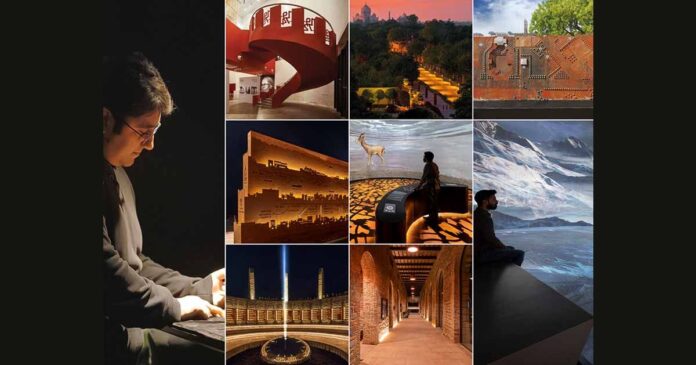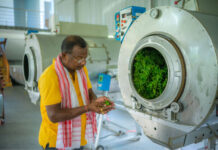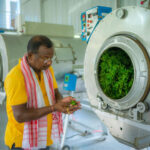Design Factory India’s contributions to India’s past, present, and future.
Stories are the backbone of our history, shaping our perceptions and guiding our actions. They have the power to transport us to different eras, introduce us to new perspectives, and inspire us to make a change. They document the past, inform the present, and shape the future. How do you make these stories come to live?
Today, these stories come alive in the form of cultural spaces and museums created by Mr Siddharth Bathla, and his team at Design Factory India (DFI).
DFI has worked on some of the most influential museums, heritage sites, and architecture projects across the country. With a focus on storytelling, narrative, and immersive experiences, Bathla’s projects are not only informative, but also emotionally engaging.
Did you know that there was a provisional government of free India even before 1947? Do you know who the father of the Indian National Army is? While you can find these answers in the galleries of Bose and Indian National Army Museum – designed by DFI, the point of these questions is that many of us miss out on an opportunity to ask these questions, and have them answered. The answer to that? You guessed it right. Museums!
Why do people create museums? Are we just preserving history, or can they serve a greater purpose? To answer this question, we take a look at one of Bathla’s most influential projects -India’s largest memorial museum – Smritivan from Bhuj, Gujarat. The exhibits in the museum convey the devastating events of the 2001 Gujarat earthquake, as well as the reasons behind such natural occurrences, the future of disaster management, along with so many more topics . Batha believes that museums are not only a place to display artefacts, but they’re also a space to bring people together for conversations, discussions, a space for documentation, and to influence.
Have you heard about the Jamiat Ulama-i-Hind Museum? designed by Design Factory India, this museum addresses ideologies of freedom, secularism, anti-terrorism, humanity, and relentlessly continues to work upon them despite odds in changing times and circumstances. This museum commemorates the mission, vision & struggles of Islam in India; and also participates in the celebration of these 100 years. “It’s important to remember that India is a diverse country and it’s crucial to provide a platform for marginalised communities to tell their own stories. It’s museums like these that can help in creating a better understanding, and bridge the gap amidst India’s rising communal tensions. They challenge the perceptions, and create an opportunity for a better tomorrow.” adds Bathla .
“We have a responsibility to history, but as designers, we also have the responsibility to make sure the users understand the content easily,” explains Bathla. “We need to entertain first, then inform, and then inspire. With strategic structures and complex reactions, museums have a history to tell. They are tangible experiences for the end-user to understand the political order, social structures, and system of thought.”
Bathla also sees historical places as museums with larger artefacts, and his work on the redevelopment and conservation of Taj Ganj, Ghats of Varanasi, Hussainabad, Modhera Sun Temple, and Lal Imli are a reflection of this, and bridges the gap between historical monuments and the way they are experienced. “We need to make sure that these historical places are preserved for future generations,” Bathla says. “They are important not just for their historical significance, but also for their cultural importance.”
In conclusion, Siddharth Bathla’s work is not only transforming the cultural landscape of India, but it is also educating and inspiring visitors from all over the world. His use of virtual and augmented reality, theatrical 3D and 360-degree video projections, projection mapping, holograms, and storytelling techniques make his projects truly immersive, impactful, and are transforming the experiences of museums in India.
His work is truly shaping the way we see and connect with our history, and that is something that will be remembered for generations to come.
Some of DFI’s notable projects also include the Red Fort Centre-Delhi, Veer Balak Smarak -Anjar, Gandhi Bhawan – Kanpur, Biplobi Bharat-Kolkata, Nirbhik Subhas- Kolkata, Museum of Socialism – Lucknow, National Museum- Delhi, First war on Independence 1857 museum – Ambala, Balasaheb Memorial – Arunagabad, and the list goes on. You can also check out their work at www.designfactoryindia.org.
















